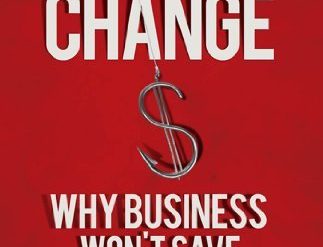
Silicon Valley has warped our perspective on innovation. Think of the words invention or innovation, and what’s most likely to come to mind today? The computer, the Internet, and their various permutations and combinations. But take a broader, historical perspective, as Steven Johnson does through the lens of what he terms “long-view history,” and the concept of innovation looks very different, indeed.
Estimated reading time: 4 minutes
In Johnson’s view — and possibly in yours as well, if you read How We Got to Now — the most profound innovations that have made our lives what we are today involve glass, cold, sound, cleanliness, time, and light. Take glass, for example, the substance that human ingenuity has crafted into spectacles, telescopes, microscopes, still and film cameras, and the fiber-optic cables that constitute the backbone of the Internet and carry the lion’s share of transoceanic telephone and data transmissions.
This is Big Picture history that transcends the trivial concerns of any age and takes a deep dive into the development of what we call civilization and its impact on individual human lives. The book is cogently argued, credibly based on historical research, and beautifully written.
How We Got to Now: Six Innovations That Made the Modern World by Steven Johnson ★★★★★
Consider this: With Gutenberg’s perfection of movable type, a veritable flood of relatively cheap and portable books became available, giving rise to the spread of literacy — and this in turn gave rise for the first time to the realization that a sizable proportion of the populace was myopic. “Within a hundred years of Gutenberg’s invention, thousands of spectacle makers around Europe were thriving, and glasses became the first piece of advanced technology — since the invention of clothing in Neolithic times — that ordinary people would regularly wear on their bodies.”
You don’t even need to be as profoundly near-sighted as I was for more than sixty years (before my cataract operations) to appreciate how much the invention of eyeglasses improved the quality of my life. Dependent as I am on email, my smartphone, and the Internet, their combined impact pales beside the ability that spectacles gave me to read newspapers and books and to see the world around me.
In this brilliant book about innovation, the author rejects the primacy of the lone genius
Johnson rejects the notion of the lone genius inventor as the embodiment of revolutionary innovation. Before Edison perfected the incandescent light bulb, for example, dozens of other inventors had labored for eighty years on the same quest, devising many of the elements (the carbon filament, the vacuum) that would ultimately make his “invention” possible. The first patent was issued in 1841, thirty-eight years before Edison’s was granted. And Edison himself worked with a large team of assistants in his famous lab in Menlo Park, New Jersey.
Johnson likens the process of invention to coevolution. He postulates a “hummingbird effect,” noting that the unique characteristics of that tiny bird — its Pinocchio-like nose and its ability to hover like a helicopter — came about in tandem with the evolution of energy-rich nectar in flowers. “Innovations usually begin life with an attempt to solve a specific problem,” Johnson writes, “but once they get into circulation, they end up triggering other changes that would have been extremely difficult to predict.”
Steven Johnson is a popular science writer with a contrarian bent, never content to traffic in conventional wisdom. His earlier books include Everything Bad Is Good for You, The Ghost Map, Where Good Ideas Come From, and Emergence.
For related reading
I’ve also reviewed another excellent book by Steven Johnson: Extra Life: A Short History of Living Longer—Why are people living so much longer these days? And earlier I’d read his fascinating chronicle of the 19th century breakthrough in urban sanitation, The Ghost Map.
This is one of the Best books about innovation reviewed here.
You might also enjoy Science explained in 10 excellent popular books.
If you enjoy reading nonfiction in general, you might also enjoy:
- Great biographies I’ve reviewed: my 10 favorites
- My 10 favorite books about business history
- 20 top nonfiction books about history
- The 10 most memorable nonfiction books of the decade
And you can always find my most popular reviews, and the most recent ones, on the Home Page.



























